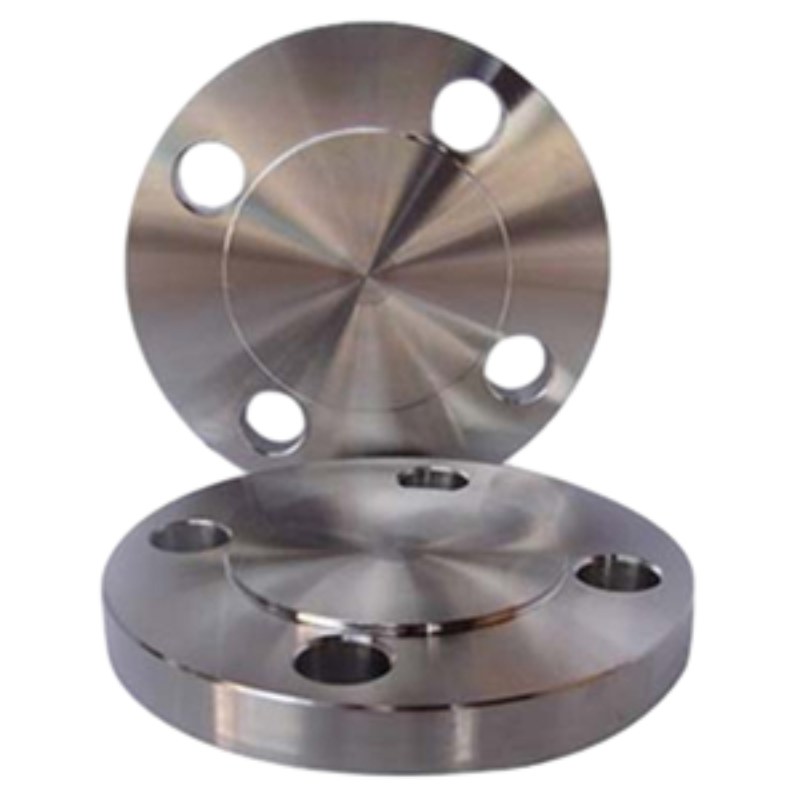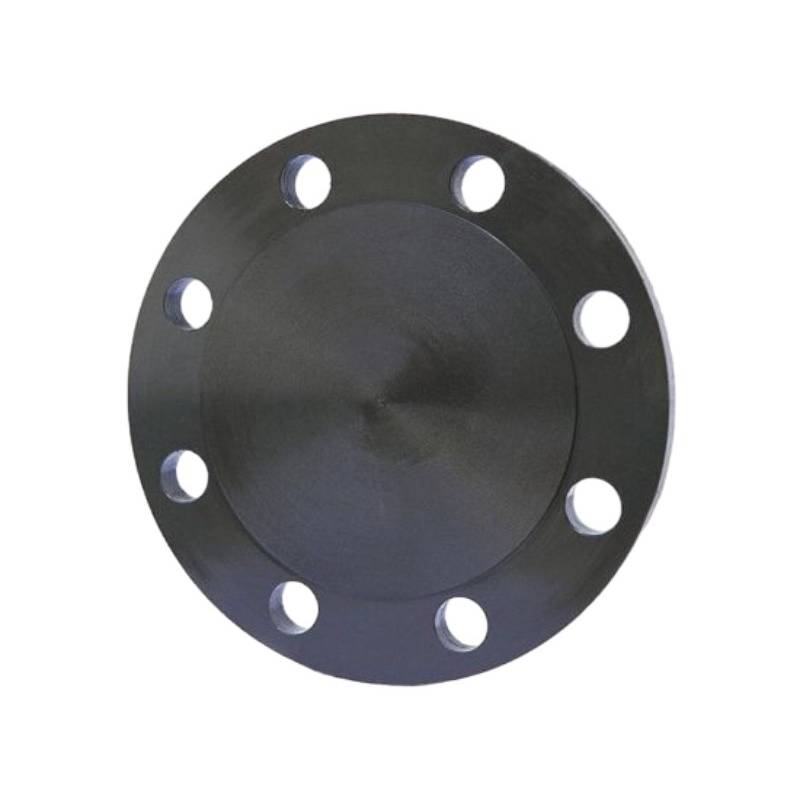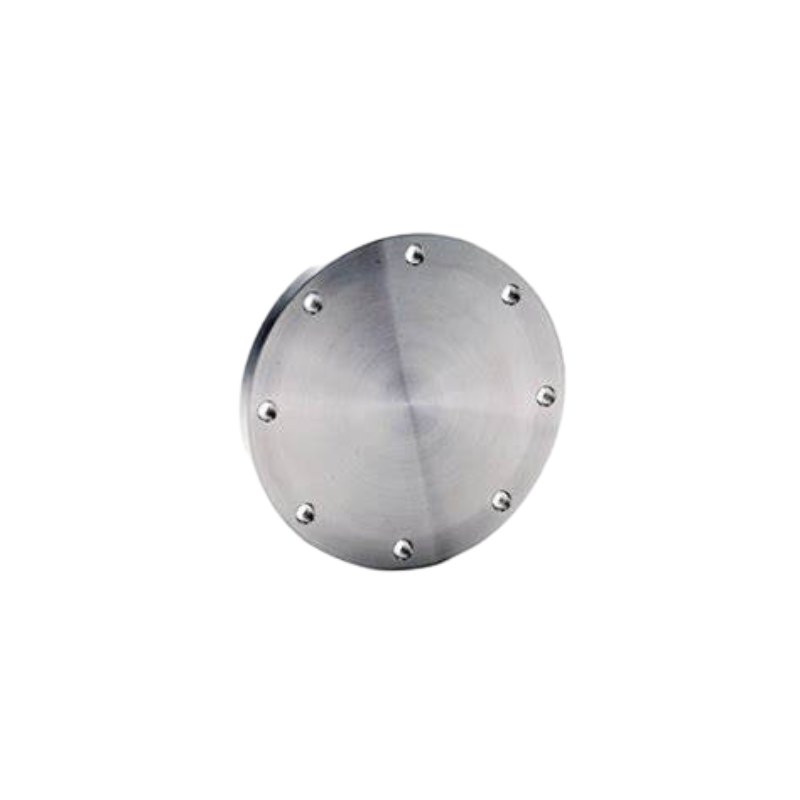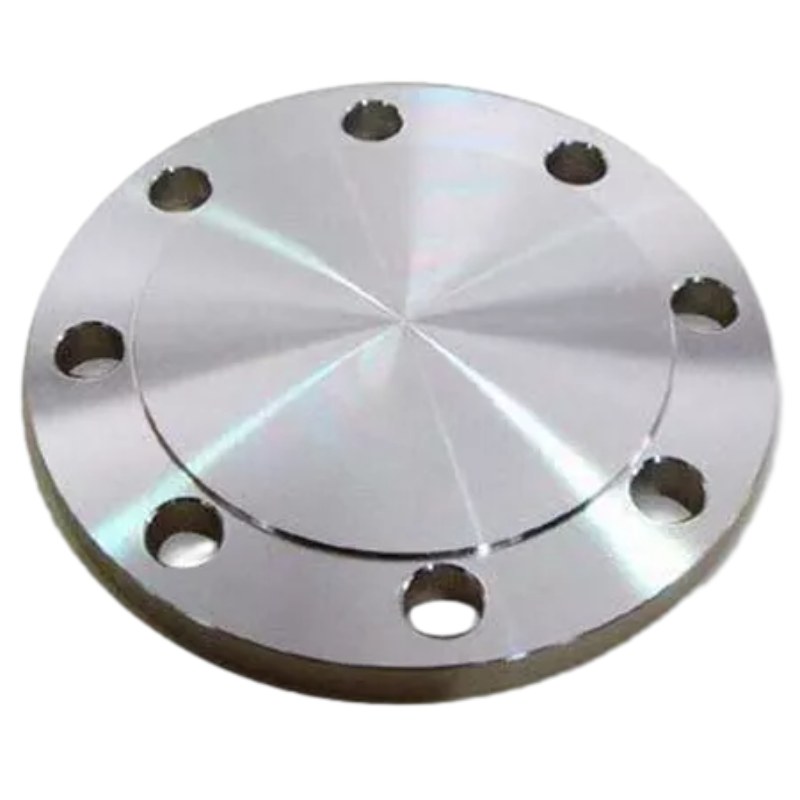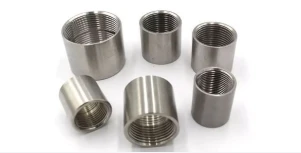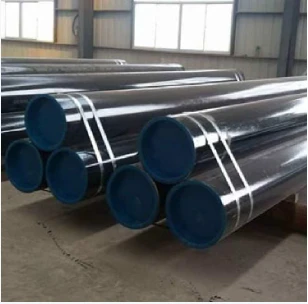-
Нык дизайн: GOST 12836-67 Сукыр фланг периметр тирәсендә тигез арада болт тишекләре булган яссы, түгәрәк тәлинкә. Бу дизайн торбалар системалары өчен нык һәм тотрыклы ябылу чишелешен тәэмин итеп, парлашу флангына җиңел тигезләнергә һәм болытларга мөмкинлек бирә.
-
Куркынычсыз мөһер: Торба ахырында урнаштырылганда, GOST 12836-67 Сукыр флангның яссы йөзе каты мөһер ясый, сыеклыкның агып чыгуын һәм торба системасының бөтенлеген саклый. Бу куркынычсыз мөһерләү мөмкинлеге, хәтта экстремаль эш шартларында да, оптималь эшне һәм куркынычсызлыкны тәэмин итә.
-
Күпкырлы кушымта: Нефть һәм газ эшкәртү заводларыннан алып химия эшкәртү заводларына һәм су бүлү челтәрләренә кадәр, GOST 12836-67 Сукыр фланглар төрле тармакларда күпкырлы кулланылыш таба. Изоляция максатларында, басымны сынау яки вакытлыча ябу өчен кулланылса да, бу фланглар критик торба системаларында ышанычлылык һәм ныклык тәкъдим итә.
-
Тотрыклы төзелеш: Углерод корыч, дат басмаган корыч яки эретелгән корыч кебек югары сыйфатлы материаллардан төзелгән, GOST 12836-67 Сукыр фланглар гаҗәеп көч һәм ныклык күрсәтәләр. Алар каты эш шартларына, шул исәптән коррозив мохиткә, югары температурага, көчле басымга каршы тору өчен эшләнгән, озак вакытлы эшләүне һәм ышанычлылыкны тәэмин итә.
-
Төгәл инженерия: GOST 12836-67 Сукыр фланглар төгәл эшкәртү һәм инженерлык процессларын үтәләр, каты үлчәмле толерантлык һәм өслек бетү таләпләрен канәгатьләндерү өчен. Бу төгәллек башка стандарт фланглар белән туры килүне һәм алышынуны тәэмин итә, торба системаларына өзлексез интеграцияләнүне җиңеләйтә һәм агып чыгу яки ватылу куркынычын киметә.
-
Урнаштыру җиңеллеге: GOST 12836-67 Сукыр флангларны урнаштыру эффектив һәм туры, гади тигезләү һәм торба очына кадәр болыт таләп итә. Аларның стандартлаштырылган үлчәмнәре һәм дизайны булган торба челтәрләренә җиңел интеграцияләнүне җиңеләйтә, урнаштыру вакытын һәм хезмәт чыгымнарын киметә.
Төп үзенчәлекләр:
- Куркынычсыз ябу өчен нык дизайн
- Тигез йөз дизайны белән куркынычсыз мөһерләү
- Тармаклар буенча күпкырлы куллану
- Озак вакытлы эш өчен ныклы төзелеш
- Каты толерантлык өчен төгәл инженерия
- Гади тигезләү һәм болтинг белән урнаштыру җиңеллеге
Material Selection for GOST 12836-67 Blind Flanges: What You Need to Know
When it comes to GOST 12836-67 blind flanges, selecting the appropriate material is crucial for ensuring functionality, safety, and longevity in various applications. GOST standards, established by the Euro-Asian Council for Standardization, Metrology and Certification, guide the specification of materials to maintain the integrity of piping systems.
Key Considerations for Material Selection:
1. Corrosion Resistance: One of the primary factors in choosing a material for GOST blind flanges is its ability to resist corrosion. Stainless steel (such as 304, and 316) is a popular choice due to its excellent resistance to oxidizing environments. For applications involving aggressive chemicals, alloys like Inconel or Monel are often considered.
2. Pressure and Temperature Rating: GOST blind flanges need to be rated for the specific pressure and temperature conditions they will face. Material selection must align with the service conditions to avoid failure. For high-pressure applications, carbon steel flanges can be suitable, provided they are properly treated or coated.
3. Weldability and Machinability: Depending on installation requirements, the selected material should offer appropriate weldability and machinability. If modifications or on-site fabrication are necessary, choosing materials that can be easily welded is essential.
4. Standards Compliance: Ensure that the materials selected comply with all relevant GOST standards. This not only guarantees quality but also maintains compatibility within the piping system.
5. Cost-effectiveness: While material selection should prioritize performance and safety, cost considerations also play a significant role, especially in large-scale projects. Finding a balance between budget and quality is essential.
Differences Between GOST 12836-67 Blind Flange and Other Flange Standards
When comparing the GOST 12836-67 blind flange with other flange standards, several key differences emerge that reflect the unique characteristics and applications of the Russian standard. The GOST (Gosudarstvennyy Standart) system is a set of regulations and guidelines that govern various industrial products, including blind flanges, which are used to seal off piping systems.
One of the primary differences lies in the dimension and pressure rating classifications. GOST 12836-67 blind flanges are specifically designed according to Russian specifications, with dimensions that may differ significantly from those outlined in ANSI, ASME, or ISO standards. For instance, while ANSI/ASME flanges are typically categorized into nominal pipe sizes (NPS) and pressure classes, GOST flanges feature a unique set of sizes and pressure ratings, making it essential for engineers to select the appropriate type based on regional standards.
Another notable difference is the material composition. The GOST standard emphasizes the use of specific materials that are suited for the harsh Russian climate and industrial requirements. While common materials such as carbon steel and stainless steel are also used in other standards, GOST may specify additional material grades to accommodate unique environmental challenges, including extreme temperatures and corrosive conditions.
Additionally, the manufacturing and testing processes for GOST 12836-67 blind flanges are subject to local industry regulations, which might include stricter quality assurance protocols compared to other international standards. This ensures that the flanges not only meet dimensional specifications but also effectively withstand the pressures and temperatures expected in typical applications within Russia.
In summary, while GOST 12836-67 blind flanges share similarities with other flange standards, their unique dimensions, material requirements, and quality assurance processes set them apart. Understanding these differences is crucial for engineers and designers when selecting flanges for specific applications in diverse geographical locations.







